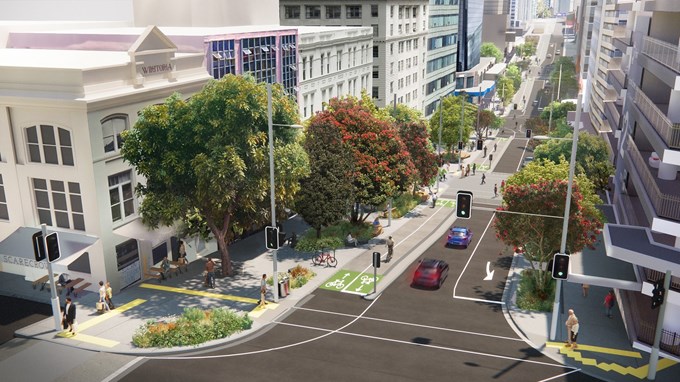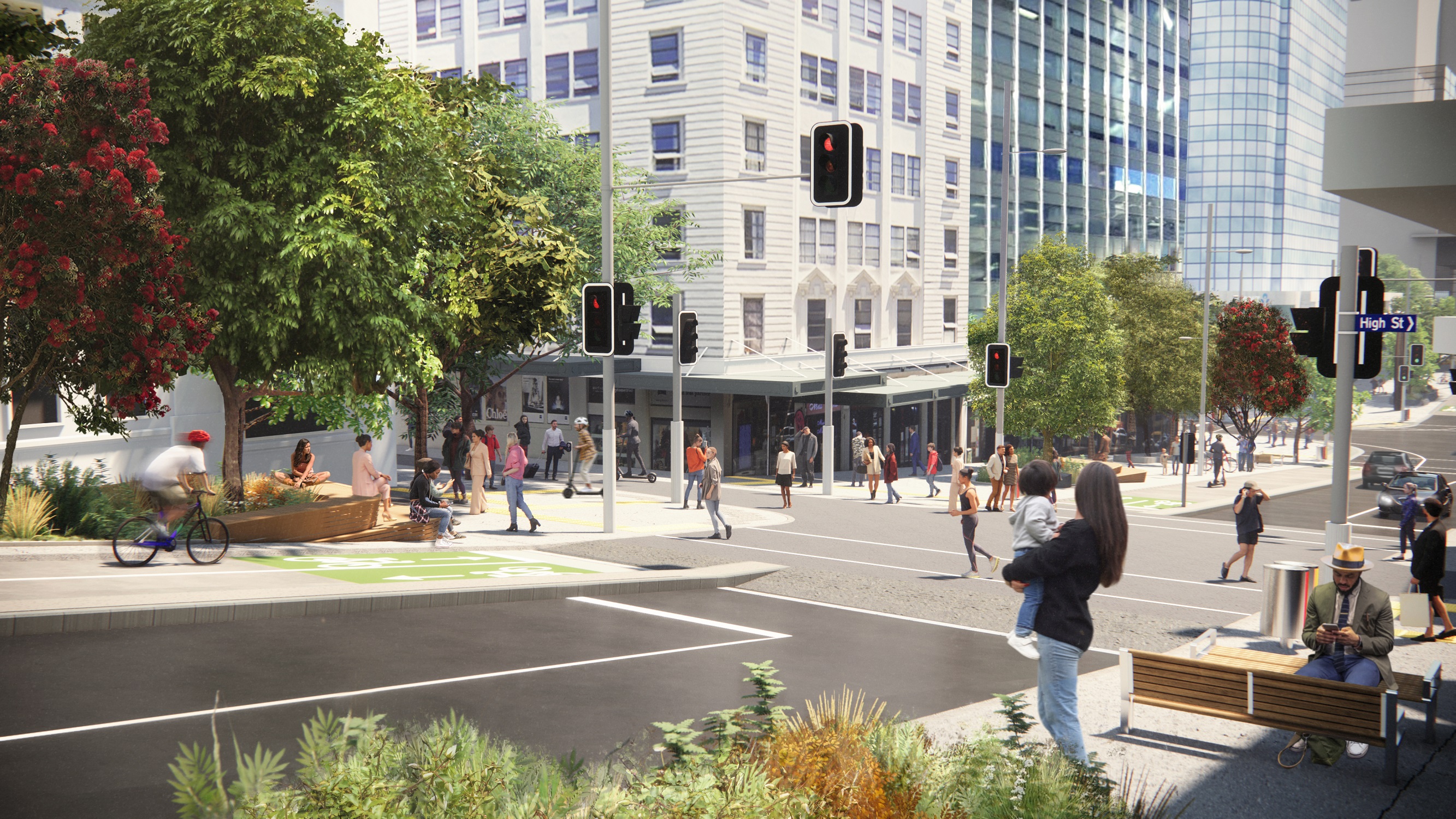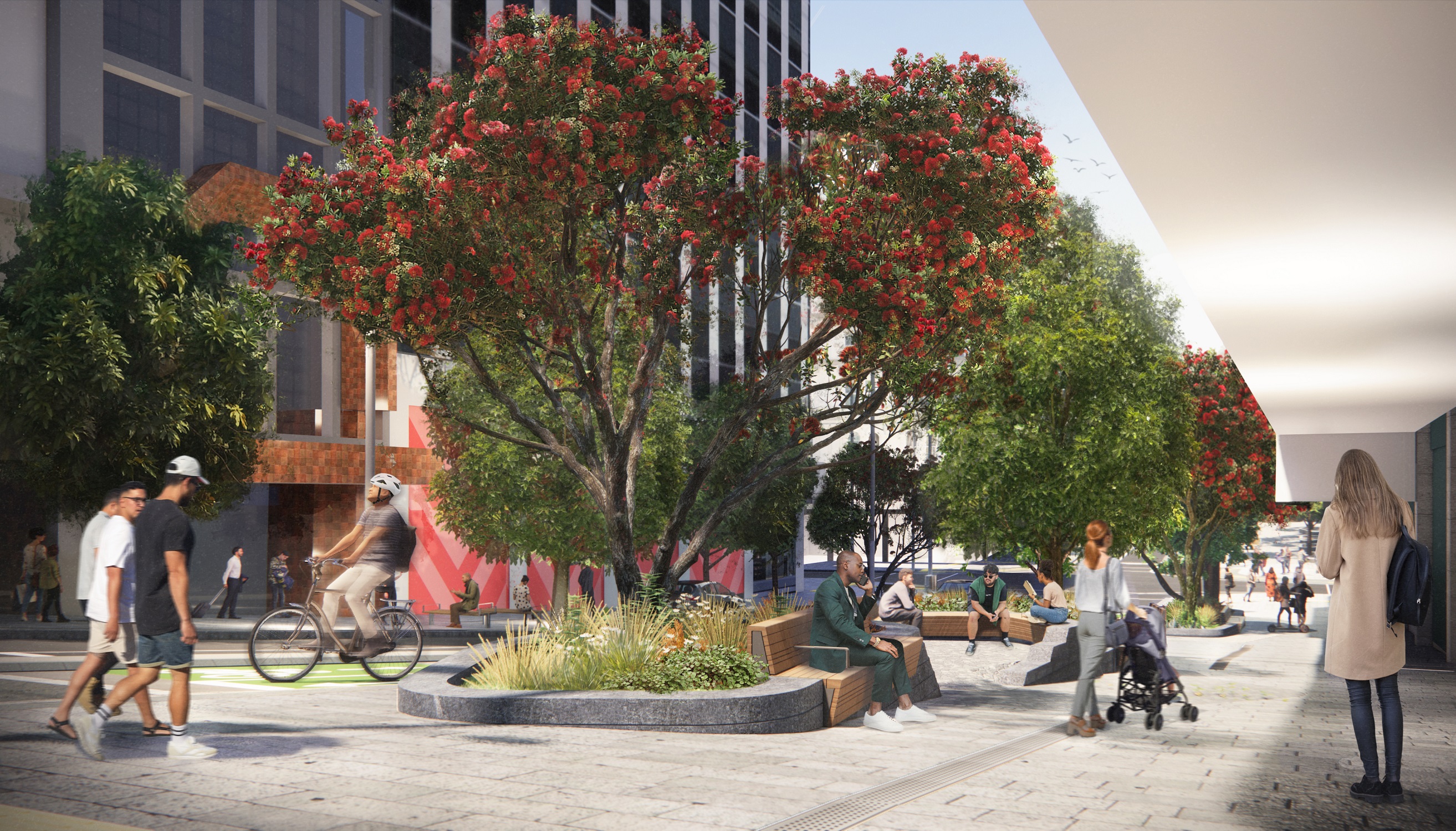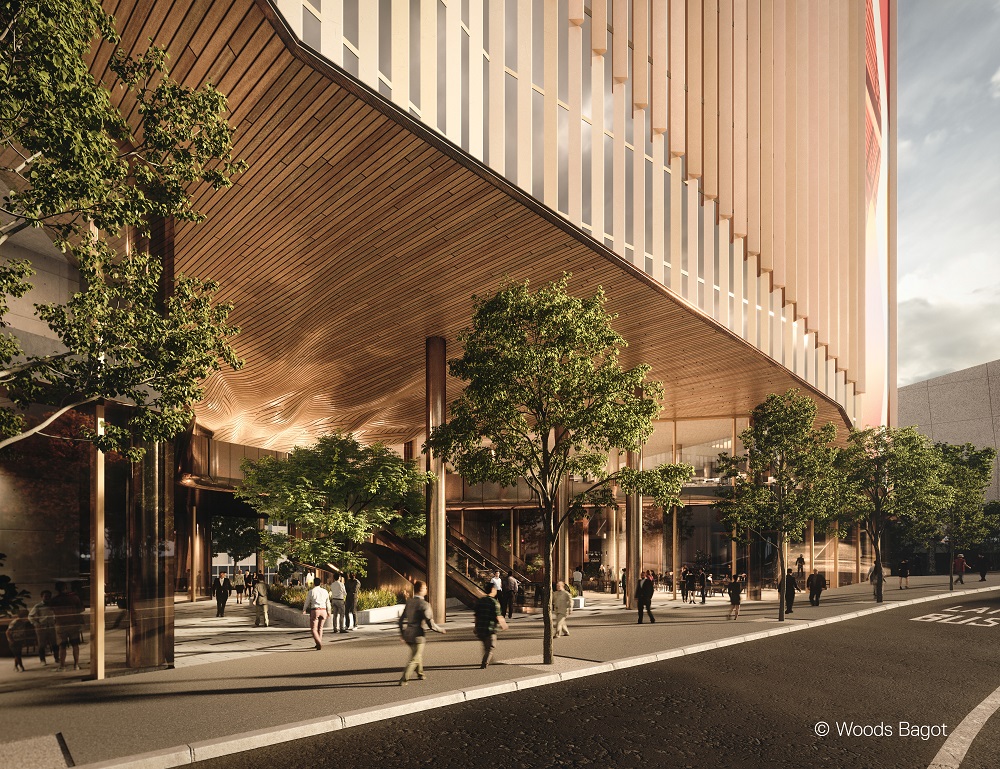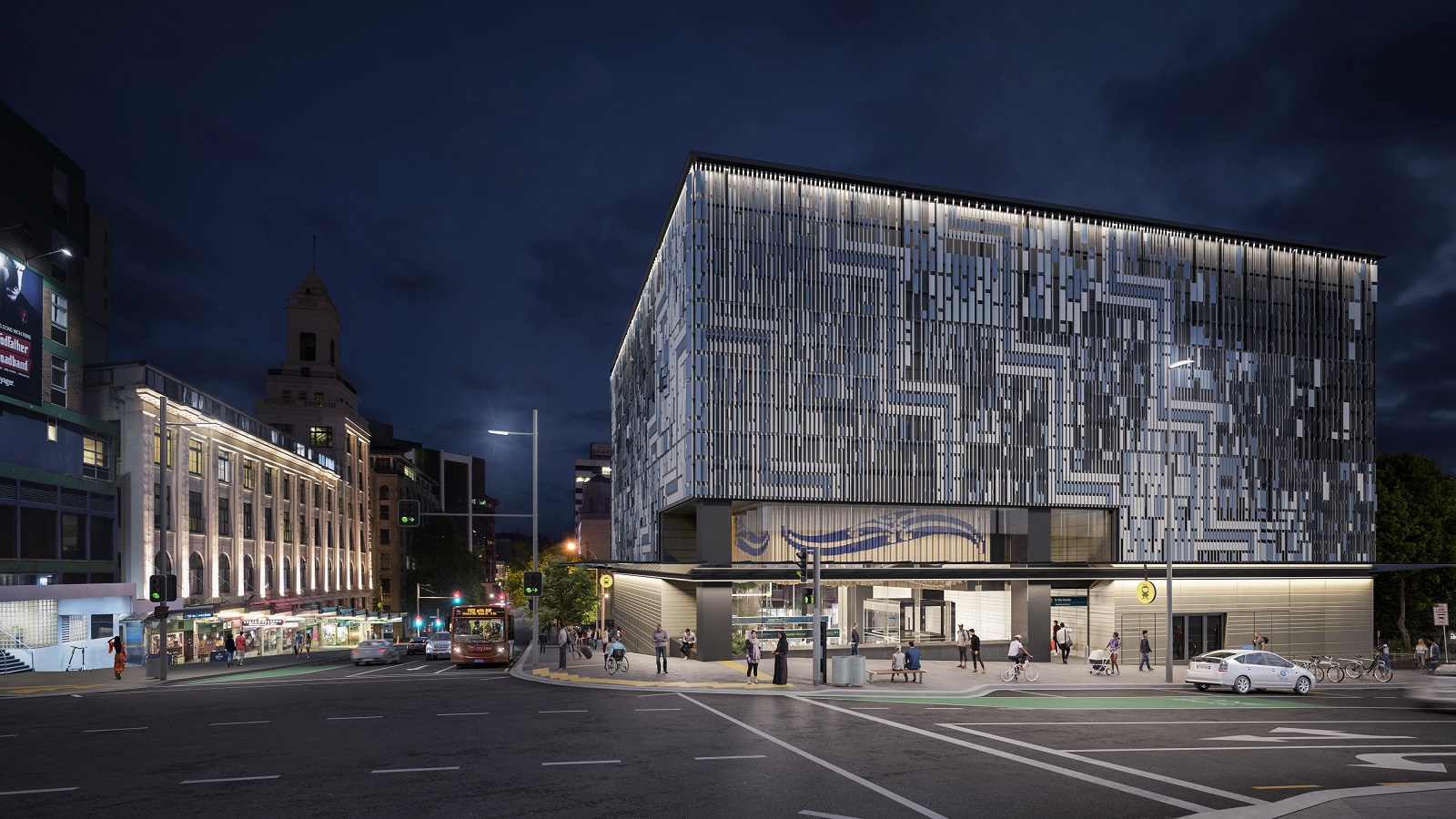With construction start-dates drawing closer, Auckland Council and Auckland Transport throw new light on the Wellesley / Victoria Street system, a pivotal part of the city centre’s midtown regeneration programme.
When the construction machinery, tunnel boring machines, hard hats and road cones are gone, midtown will be one of the most exciting parts of the city centre. Getting there requires complex integrated works, but it will all be worthwhile – here’s why.
Both Wellesley and Victoria Streets were once dense traffic routes carrying four lanes of cars, trucks and buses, with cyclists daring to weave a path along the fringes and pedestrians competing with e-scooters for a sliver of pavement on either side.
That is all changing – for the better.
In 2021 Auckland Transport buses were moved from Victoria Street across to Wellesley Street. That helped Aucklanders picture the future of Wellesley Street as midtown’s dedicated east-west bus corridor between Albert and Queen Streets. It also enabled a pedestrian-prioritised Victoria Street - Te Hā Noa - to proceed.
The aim is to achieve a system, a form of urban symbiosis, for these two historic east-west streets, as both will have portals into and out of Te Waihorotiu Station (Aotea).
Victoria Street is set to become a tree-lined, pedestrian-prioritised street with the delivery of Te Hā Noa. The design of the street will provide one lane of vehicles in each direction, connected laneways, wide footpaths with places to sit and spend time, street furniture, public art and a protected cycleway.
Construction will start on the midtown part of Te Hā Noa in Victoria Street in early 2023. Stage One of the Wellesley Street Bus Improvements project, turning the section between Albert and Queen Street into a bus corridor, will begin in late 2023.
When Te Waihorotiu Station (Aotea), Wellesley Street bus corridor and Te Hā Noa are operational, another page will turn on the Auckland Council group’s delivery of the City Centre Masterplan vision – to create a more welcoming, greener and vibrant city centre, with people-friendly streets and a well-connected world-class public transport system.
Here’s how these three dynamic elements will form New Zealand’s busiest bus-train-pedestrian-bike-micro-mobility hub:

